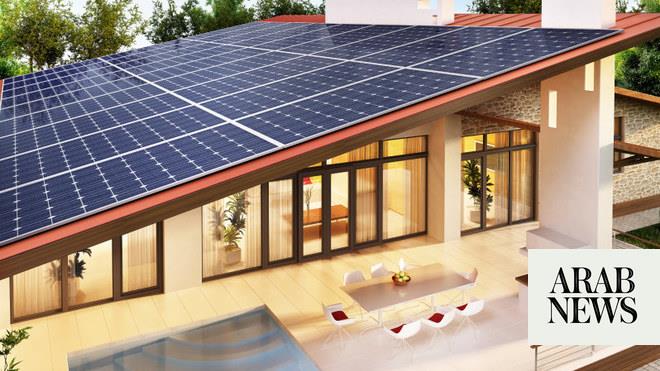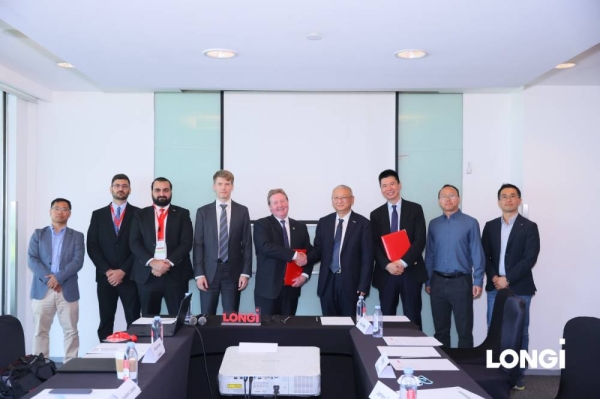
Research team, led by Prof. Stefaan De Wolf at the KAUST Photovoltaics Laboratory, discovered a way to significantly improve the efficiency and durability of solar cells
De Wolf said that the cells had undergone testing under conditions that replicate the intense light and heat of the Arabian Peninsula
RIYADH: Researchers at the King Abdullah University of Science and Technology have made a breakthrough in solar energy technology by developing a novel method to enhance the performance and stability of perovskite silicon tandem solar cells.
The research team, led by Prof. Stefaan De Wolf at the KAUST Photovoltaics Laboratory, discovered a way to significantly improve the efficiency and durability of these solar cells by introducing a chemical cation called tetrahydrotriazinium into the perovskite material.
De Wolf said that these cells have undergone testing under conditions that replicate the intense light and heat of the Arabian Peninsula, which indicates that they can function effectively in environments with extreme climatic conditions where they might be required to operate.
Published in Science, a leading peer-reviewed academic journal that covers a wide range of scientific disciplines, the method demonstrated that tetrahydrotriazinium strengthens the perovskite crystal structure by increasing hydrogen bond formation.
According to the journal, this enhancement substantially boosts power conversion efficiency and resistance to degradation caused by factors like intense sunlight and heat.
De Wolf emphasized the team’s commitment to further enhancing the technology’s performance and reducing costs through ongoing research.
While the potential for commercialization is substantial, partnerships are essential to scale production and bring this innovative technology to market, he said.
This groundbreaking research represents a major step forward in developing affordable and sustainable solar energy solutions.
A-cations like tetrahydrotriazinium have a positive effect on the phase stability and electronic quality of perovskite films.
Tetrahydrotriazinium had been a difficult molecule to synthesize and isolate until last year when a different research group showed the benefits of adding methylenediammonium chloride into the synthesis route.
De Wolf’s team showed that the additive promoted the incorporation of tetrahydrotriazinium into the perovskite lattice. The result was perovskite/silicon tandem solar cells with 33.7 percent power conversion efficiency that showed more stability after 1500 hours of testing compared with cells manufactured without tetrahydrotriazinium.
The project was run by De Wolf’s research scientist Esma Ugur, who will continue her research at LMU Munich starting in 2025.












